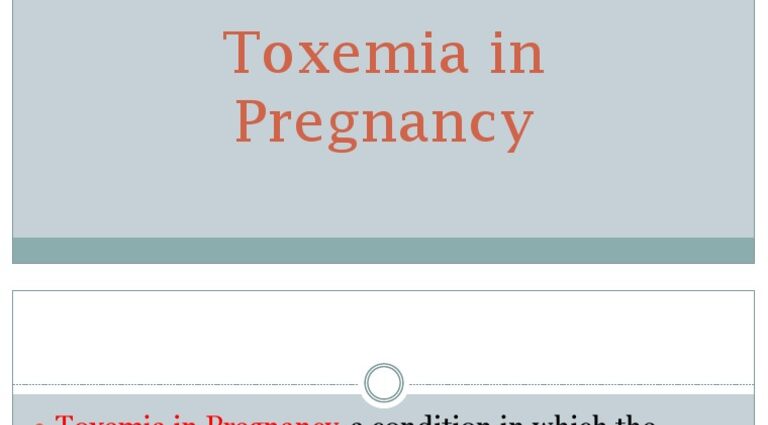Nội dung
What is toxemia of pregnancy?
A mother-to-be is said to have toxemia of pregnancy – or pre-eclampsia-, when she has hypertension (her blood pressure is 14/9 or greater) and albumin is found in her urine. These signs are almost always accompanied by swelling of the face, hands or ankles, and occur from the 5th month of pregnancy. Although these signs are not yet visible, toxemia of pregnancy begins as soon as the placenta forms. The cause: poor vascularization of the placenta which secretes substances harmful to the blood vessels. This explains why during pregnancy toxemia, complications can appear in several organs (kidneys, lungs, liver, nervous system) of the mother.
In babies, the exchange between the uterus and the placenta is reduced and growth retardation may occur.
What are the symptoms of toxemia of pregnancy?
Certain signs can alert the mother-to-be and appear gradually or more suddenly. Her face, hands or ankles are swollen, and she gains a lot of weight in a short time (for example, more than a kilo in a week). Headaches may appear, as well as visual disturbances or increased sensitivity to light. Sometimes ringing in the ears is felt. In the doctor’s office, blood pressure exceeds 14/9 and on examination of the urine, albumin is indicated by the appearance of one or two crosses on the strip. In front of these signs, hospitalization is necessary for a complete assessment of the mother and the baby.
Pregnancy toxemia: who are the women at risk?
Many factors are mentioned to explain the appearance of pregnancy toxemia. Some are linked to a mother’s illness such as obesity, diabetes, or high blood pressure known before pregnancy. Others may be related to pregnancy or age. In fact, toxaemias are more numerous in mothers who are expecting twins and in those who are over 40 or under 18. This disease is also more important if it is a first pregnancy. Researchers are looking at the early detection, in pregnant women, of certain substances responsible for hypertension.
Pregnancy toxemia: what are the consequences for mom and baby?
Pregnancy toxemia disrupts exchanges between mother and fetus: the supply of nutrients and oxygen is reduced. This situation can lead to stunted growth (hypotrophy) and distress of the baby. For mothers, the risks are firstly linked to the importance of hypertension. If it is moderate and taken care of quickly, the consequences are limited. If it is not detected early enough or reacts poorly to treatment, it can be complicated in two different ways: eclampsia and retroplacental hematoma. Eclampsia is the appearance of convulsions with sometimes disturbances of consciousness in the mother. Retroplacental hematoma is bleeding between the placenta and the uterus. The bleeding causes part of the placenta to detach from the uterine wall. Toxemia of pregnancy can also lead to kidney or liver dysfunction.
Pregnancy toxemia: specific management
Hospitalization and complete rest are essential when toxemia of pregnancy is detected. Blood pressure is monitored, urine analyzed and a complete blood test requested. Anti-hypertensive drugs are prescribed to avoid complications. At the fetal level, ultrasounds and dopplers make it possible to assess the impact on the baby’s growth. Fetal well-being is verified through monitoring. If the toxemia is severe or early, the mother is transferred to a level III maternity hospital. The gynecologist can then decide to induce labor or to perform a cesarean section. Toxemia disorders will go away within a few days or weeks after birth.










